Two households, both alike in dignity,
In fair Verona, where we lay our scene,
From ancient grudge break to new mutiny,
Where civil blood makes civil hands unclean.
—Shakespeare, Romeo and Juliet
Being more a comedy girl myself, I was unaware that Romeo and Juliet was set in Verona until Rachel, English major and Shakespeare nut, put Juliet’s Balcony on our itinerary.
Verona turns out to be gorgeous. You can see why Shakespeare set his greatest tragedy there. It’s a city of towering, palatial renaissance houses looming over narrow cobbled streets. There are frescos and turrets, fountains and clock towers, baroque courtyards and cypress trees, terracotta roof tiles and 14th-century Moorish window arches, balconies and lantern posts, and a castle with the world’s weirdest-looking crenellations. It’s one of those cities where you can hear the centuries echoing. It’s Venice but lived-in.
This is the central piazza, where you can see the facades of many of the grand old palazzos of the merchant-nobility.
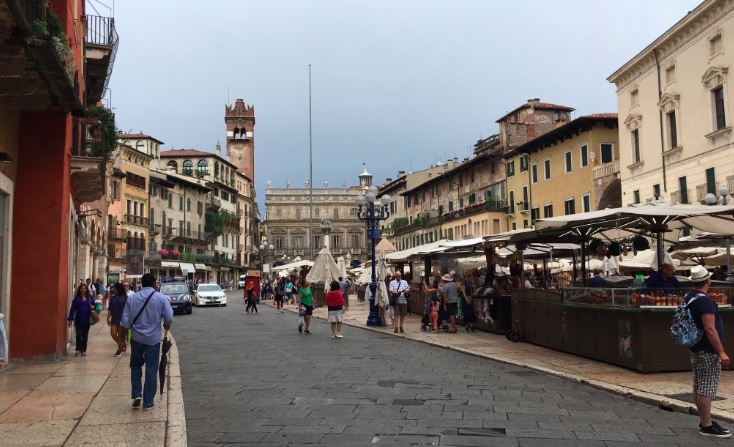
From what I could gather, Verona boasts a bit of everything from the 14th to the early 18th century (not to mention some interesting ancient Roman ruins below street level).
Medieval streets are narrow. Paired with the impressive height of the houses, you sometimes feel like you’re walking down a tunnel:
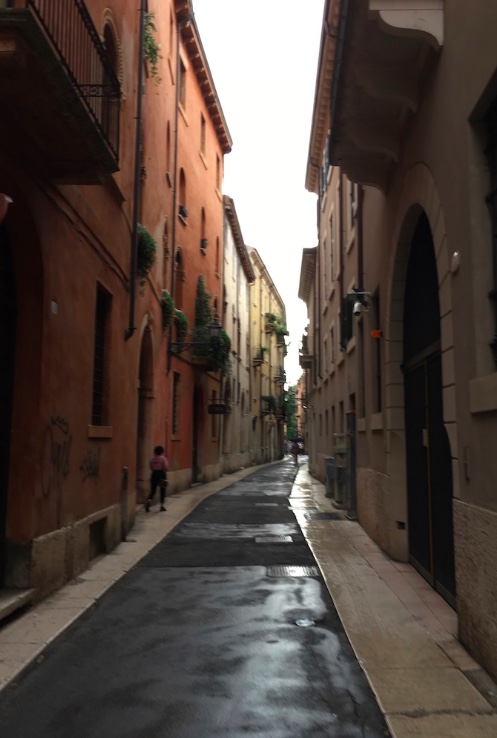
Then, of course, you get those interesting modern adaptations, like a garage in what I think might have originally been a covered market:
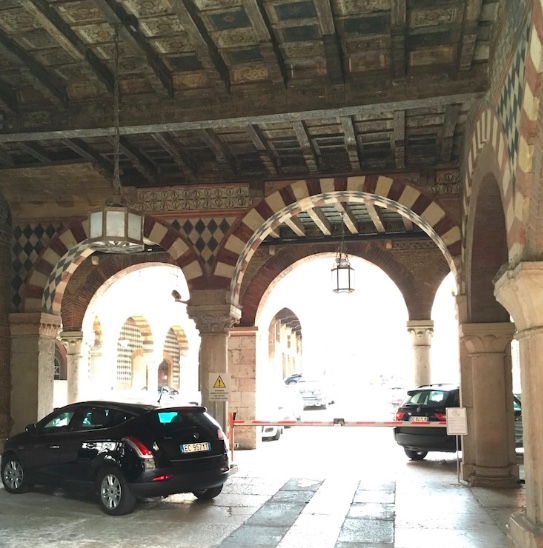
A lot of the palazzos seem to be built around a paved central courtyard, but since they’re so tall, standing in the courtyard can be like standing at the bottom of a well:
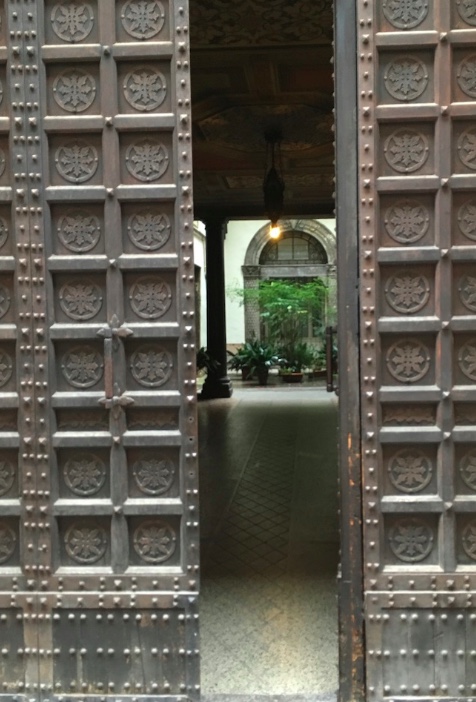
Our hostel was like that. Protezione della Giovane is located in half of a 17th-century palazzo. It towers four generous stories above a courtyard-cum-driveway-cum-garage that gets probably half an hour of sun a day. The thin stone balcony hangs a hundred feet above the flagstones:
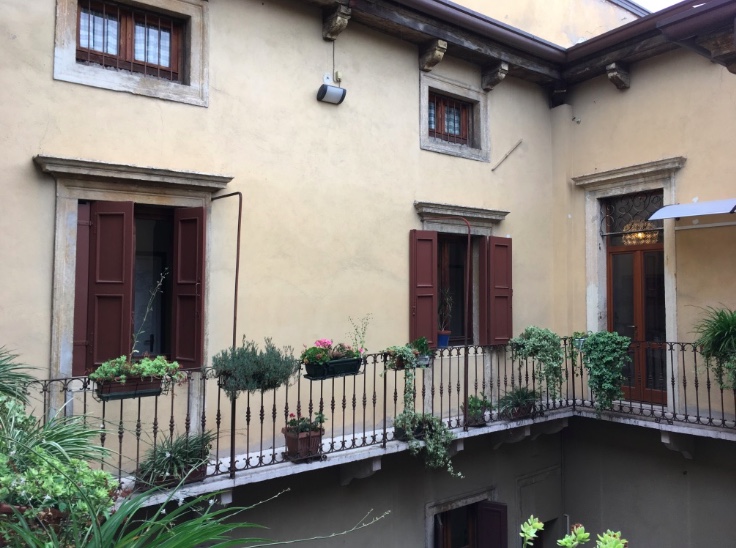
Also there was a crate of moldy kiwis on the balcony. We’re still puzzled.
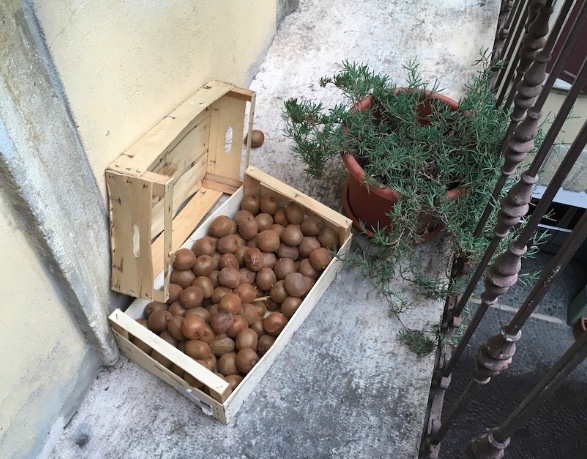
Noble houses and wealthy merchants competed to build the tallest spires above their houses. These were both for prestige and defense.
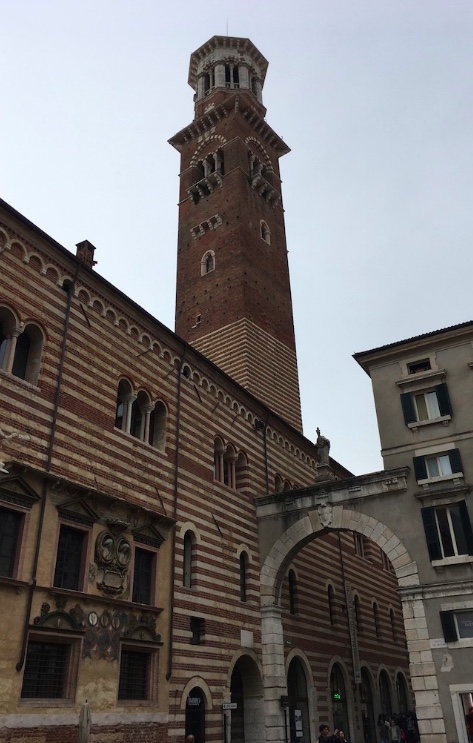
In fact, the thing that really struck me about the palazzos of Verona is how heavily fortified they are. Without a better grasp of local history I can’t be sure what exactly they thought they were fortifying against, but I have the impression—perhaps just because the Montagues and the Capulets loom so large in the imagination—that there was a fair amount of neighbor-against-neighbor. Certainly if you read Wikipedia’s history of Verona it’s one long litany of nobles poisoning, stabbing, and otherwise assassinating other nobles, when they weren’t busy scrambling for funds to hire mercenaries from other city states to send against other city states or each other.
Have a look at this fortress-like thing. There was no plaque, so I’m not sure what it is or when it dates from, but it appeared to have arrow loops around the side. Mind you, it’s not a fortification facing outward from a city wall. This is attached to a palazzo overlooking the market square in the center of the town.
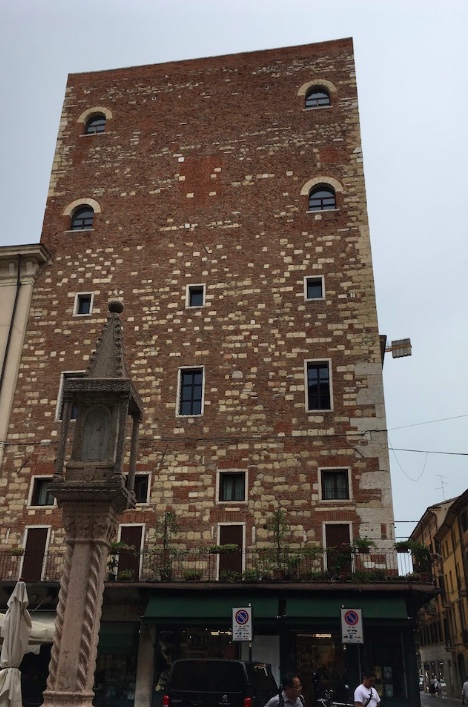
There’s a long, long colonnade near the waterfront, running beneath the faces of another row of large renaissance houses. Every single section had beautiful old blackened timber joists:
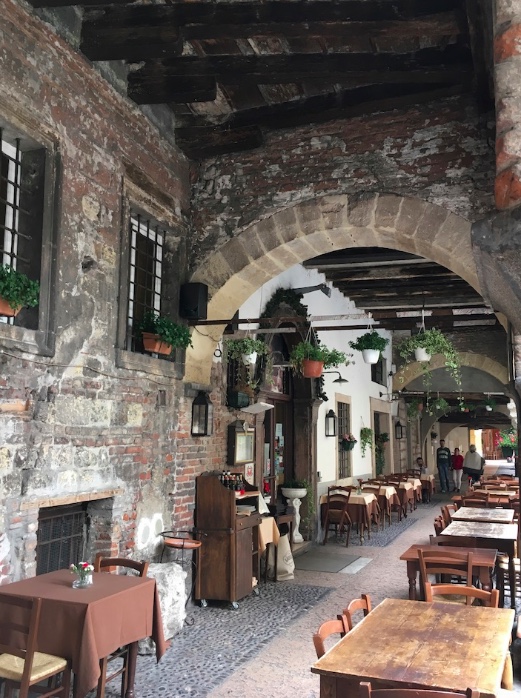
Then there’s this beautiful hill across the river. Before the Montagues and the Capulets, Verona had the ancient Romans. In fact, Verona is a Gallic distortion of Vae Roma, which means basically “on the way to Rome.” According to Wikipedia, vae was also a Latin expression sort of like “alas.” Shakespeare evidently makes an extremely complicated pun with Vae Roma, Verona, alas and Romeo, but even I didn’t understand it.
Anyway, we didn’t have time to explore that side of the river, but the view is pretty:
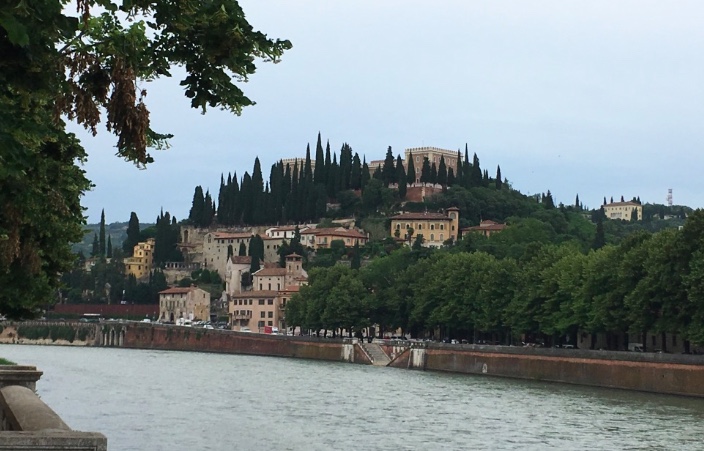
Here’s another old narrow street:
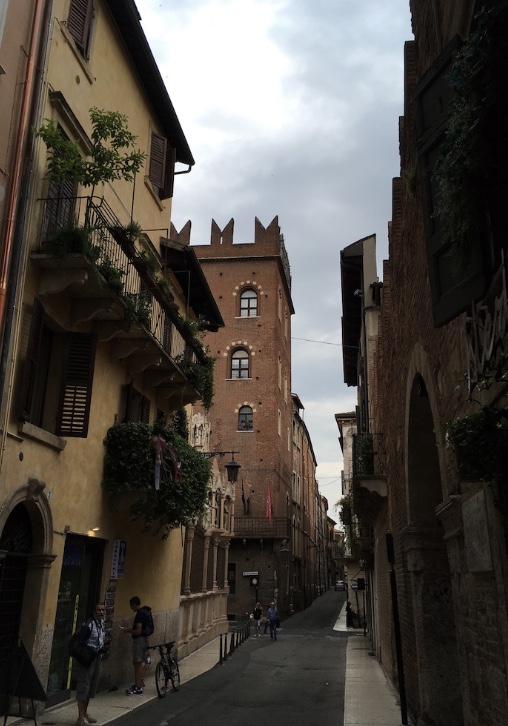
I thought Venice was a city of ghosts, but Verona seems even more so. I think it’s because there aren’t as many tourists; it feels like it’s alive, like the history hasn’t been prettied up quite as much. Sixty percent of the population died of the Black Plague in 1631. You can almost hear them whispering.
(Of course, the other explanation is that there are no historical plaques and so my imagination was free to run wild.)